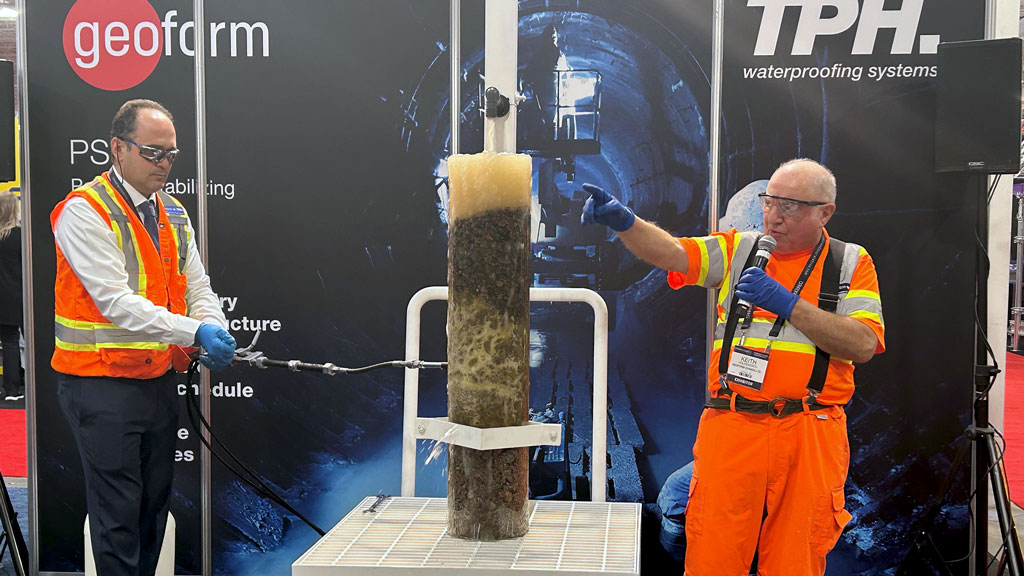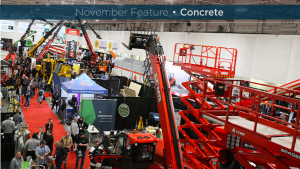Ten fundamentals for dealing with concrete quality challenges were outlined during a recent presentation at the Canadian Concrete Expo.
Kayhan Zirhlioglu, CEO of Geoform, which facilitates the construction of structures by eliminating the ground instability and water ingress challenges, discussed what can go wrong with concrete projects.
He said infrastructure projects that use a lot of concrete can experience issues that cause cost and schedule overruns.
“These are the types of challenges under the ground that can face large-scale construction projects but we are also seeing this in a lot of projects where there is deep foundations,” he said.
“Water pressure building up behind the retainer walls or foundation walls can often cause similar problems. We see this again and again and in the projects in the Toronto region.”
“Expect the unexpected underground”
Everything starts with the fundamentals, he said.
“The first one, I think this is quite obvious to everyone, but a lot of times you cannot imagine the extent of the unexpected events underground causing problems that can have a cascading effect. We call it a domino effect,” he said. “Expect the unexpected underground.”
Assess the root cause, not just the symptom was his second piece of advice.
“Most of the time when we see a problem, we see the symptom. So the water is leaking or the ground is not stable but there is something behind that,” Zirhlioglu said. “What are the root causes? There are a lot of different remedies depending on the project types for a lot of different proportions, preventative systems.”
The one issue that they often see is material and soil incompatibility.
“The selection of the material is sometimes not the best fitted to the problem at hand,” he explained.
When approaching any problem, it’s also important to make sure the ground is safe to work. Ground conditions can change with construction.
“Whatever we predict ahead of the construction, whatever precaution we take…we can never 100 per cent predict that is what’s going to change when we change the environment,” he said. “When we dig in the ground what’s going to change is sometimes not in anybody’s control because water flows or the ground conditions change beyond the expectation. Whatever samples we have, whatever soil analysis we make, there is a challenge.”
Keeping water away from structures
The effect of water is also important to keep in mind.
“In our experience water is the ultimate solvent,” he said. “If you look at nature, you see that water is dissolving even the rocks in time.”
He said water underground could also contain hydrocarbons and other chemicals and it’s not always possible to predict what it’s going to do to the systems.
“Water is not only water,” he pointed out. “The effect of hydrocarbons, which is the air, in the cities and around the highway areas, when there is a concentration of these hydrocarbons that has accumulated with the water in certain areas it can have an effect on concrete and any other structures.”
Keep water away from structures was another recommendation.
“Most of the time we are trying to keep the water away from our structures by building membranes, by building waterproofing systems so that the water is not touching our structure, but, in effect, the waterproofing systems also are prone to certain damages,” said Zirhlioglu. “We’ve seen this again and again where the water is coming in and touching the concrete. That’s where the problems start.”
Where there is water, there will be voids, he added.
“Whenever you see there is water coming out and depending on the velocity of water, you can expect voids behind your walls,” he said. “This means that there might be also water pressure building up which might cause other damages that you don’t know today. Especially during the construction stages this can be quite costly.”
Looking at the structure is important but so is the form.
“There are sometimes problems that are resolved but causing many other problems on the form side,” he said. “So you solve the problem but at the same time you cause other damages.”
Sweat the small details because shortcuts are very costly.
“We can make different decisions and sometimes the easiest one seems like the best one,” he said. “After sometime they see ‘oh, this is a big problem now because we just didn’t have the time or we were under stress to get to the next level. We overlooked some challenge.’”
Follow the author on Twitter @DCN_Angela




Recent Comments
comments for this post are closed